The Dictatorship
New PBS documentary explores funk music’s revolutionary roots

With President Donald Trump waging war on the arts, via his control of the Kennedy Center and his ongoing attacks on museums nationwidethe power of artistic resistance has been on my mind.
And a new documentary from PBS — “We Want the Funk!”— serves as a timely demonstration of how artistic moments and political movements can merge for the greater good — both sonically and socially.
The film, directed by Stanley Nelson and Nicole London, has an all-star roster, including George Clinton and Questlove of The Roots. It’s an homage to funk music and the unapologetic Blackness that birthed the genre — and also a celebration of the sense of community that the arts can breed when illiberal despots don’t stand in the way.
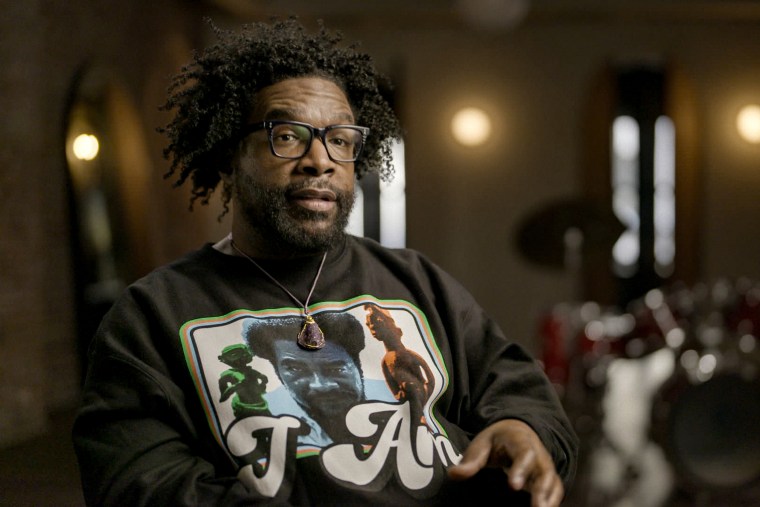
In the documentary, we learn that some of the greatest funk artists in history, from the Ohio Players to Prince and The Time, were products of public school arts programs — the kinds of programs threatened by Trump’s bigoted assault on diversity — and a Black middle class that is currently being squeezed as well. We learn that funk music gained prominence along with the Black Power movement in the 1970s, as Black people — and artists, in particular — rejected the Jim Crow era’s demands for assimilation into the purported primness of white society. As historian Scot Brown explains, funk at that time captured “the sentiment of a generational change where conformity is not the priority.” And that’s how you get songs like James Brown’s “Say It Loud — I’m Black and I’m Proud.”
As historian Scot Brown explains, funk at that time captured “the sentiment of a generational change where conformity is not the priority.”
In the documentary, we also learn that funk music — in particular, groups like Parliament-Funkadelic and Labelle — was seminal in promoting the Afrofuturism movement that merged Black creativity and science. And we learn, importantly, of the value of diversity and cultural exchange, when, for example, Clinton explains that he drew influence from Elton John and the British rock group King Crimson — but also when Talking Heads frontman David Byrne discusses the influence he drew from Black artists like Brown and members of Clinton’s band.
If you’re looking for a film that subverts the MAGA ethos in just about every way — from its celebration of free artistic expression to its open affection for diversity — without uttering Trump’s name or referencing his movement a single time, this is it.
“We Want the Funk” premieres Tuesday night and is now streaming on PBS’ website. Check it out here.
The Dictatorship
RFK Jr. makes autism testing sound terrifying. For me, it was a relief.
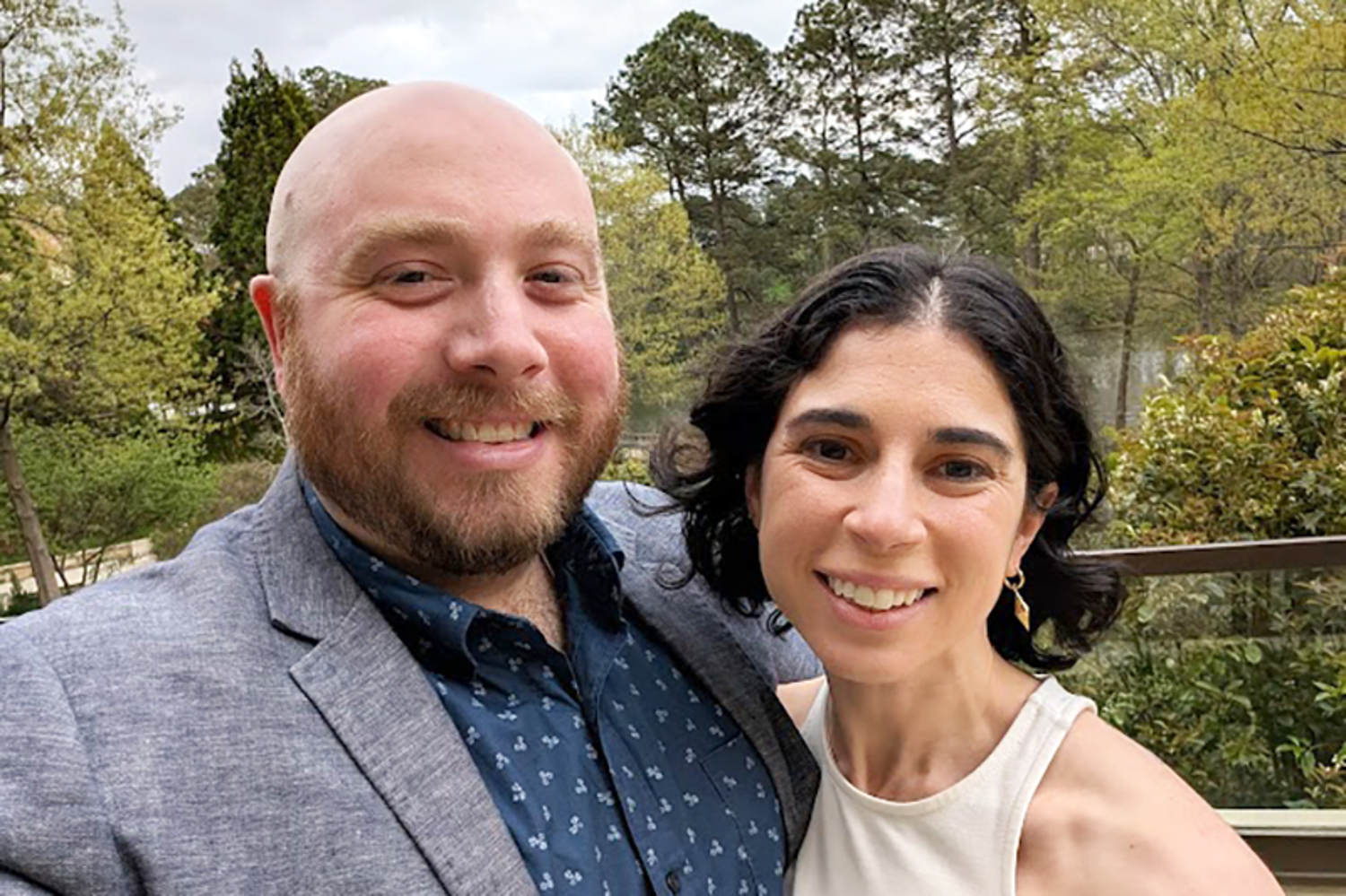
Between Robert F. Kennedy Jr.’s recent false claims that autism “destroys families” and the reports of a since-abandoned plan for a an autism registry tracking diagnosed individualsgetting tested for the condition may feel like an especially fraught decision right now. I absolutely understand these concerns. But forgoing an autism diagnosis poses its own risks, while also denies the person invaluable insight and support — both of which I received when I was diagnosed with autism last year.
I always felt different from my peers in ways that my ADHD and anxiety diagnoses couldn’t seem to fully explain.
Throughout my childhood and young adulthood, I always felt different from my peers in ways that my ADHD and anxiety diagnoses couldn’t seem to fully explain. Although I had a large social network, I struggled to feel at ease in my friends’ presence, craving closeness but lacking the ability to open up emotionally as easily as they did. When I did speak more freely, my words came out too loud and too fast, with a fervency that often blocked out social cues.
At both work and school, I thrived in areas I enjoyed but had immense difficulty grasping and completing tasks outside of my narrow lane of interest. As a teenager, my poor grades in math and science made me feel dumb; in adulthood, I excelled as a writer and editor but felt embarrassingly ignorant of some important life skills. And I never, ever felt at home in my own body. It was all a confusing mess; sensations like cold or hot weather wreaked havoc on my mood, bodily signals for hunger or illness (“interoception“) often went unheard, and physical actions like near-constant knuckle cracking ( Mood) and T. rex arms (a self-soothing strategy during periods of sensory overload) made me feel embarrassed in public.
Not wanting to be seen as “weird,” I tried to mimic the behaviors of neurotypical people by masking. Yet while this helped me blend in with my friends and colleagues, it didn’t stop the feelings of shame and inadequacy. Why couldn’t I just be “normal”? Despite my impressive career and loving marriage, I felt certain there was something deeply wrong with who I was.
Getting diagnosed with autism, however, erased that feeling. The process started in late 2023, when my then-therapist gently suggested I get tested, explaining that several of my symptoms aligned with the condition. Although I understood her reasoning, I hesitated. No one I knew was openly autistic, and the autistic adults I’d seen in the media were typically portrayed as awkward, painfully honest loners whose lives didn’t at all look like my own. Because I’m an extrovert with a wide social network, I didn’t believe my issues were enough to warrant an actual diagnosis. Yet when a neuropsychologist and a neurologist both echoed my therapist’s recommendation, I realized stigma and misinformation had clouded my perception of what autism “looks” like. I signed up for an evaluation.
Six months and multiple intensive meetings with specialists later, I was officially diagnosed with autism at age 30. I felt tremendous relief. Finally, there was a reason for why I’d felt so different my entire life, and it wasn’t because I was less-than or not good enough. As the specialists explained, my brain just wasn’t wired the same way as those of my neurotypical peers — a simple fact of science, not a reason for shame.
Crucially, the diagnosis also allowed me to feel more comfortable asking for help.
While the revelation didn’t entirely erase my insecurities or longing for normalcy, it did significantly boost my confidence and lower my anxiety — especially when I revealed my diagnosis to my friends and loved ones, all of whom expressed both support and gratitude that my normally closed-off-self trusted them with the information. My friends gained a clearer understanding of who I am, deepening our bonds, while multiple members of my family with similar behaviors to my own started their own important processes of self-reflection. Connecting with other autistic folks (especially those who also had ADHD) both in person and online has provided new avenues for self-reflection and community, as well.
Crucially, the diagnosis also allowed me to feel more comfortable asking for help. I’m fortunate enough to not require any major accommodations or additional care, unlike many people on the spectrum, and I work from home rather than on an overstimulating office floor. Still, there are times when my brain messes with my abilities, both big and small. Cooking, for instance, has always been a challenge due to my weak senses of smell and taste, my overall disinterest in the activity and my subsequent tendency to make mistakes.
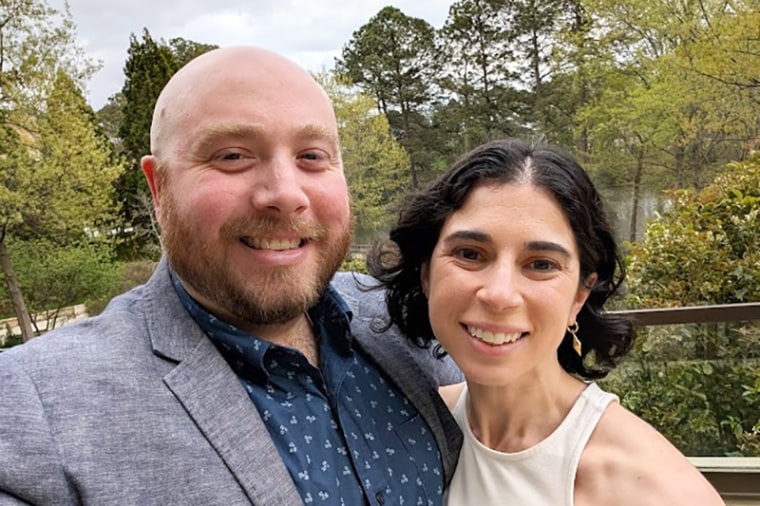
Luckily, my husband is a fantastic chef, but my inability to make the occasional meal understandably caused him frustration — which in turn led to guilt and unproductive arguments. After my diagnosis, I felt better equipped to explain exactly why I struggled in the kitchen and we were able to work together on a system that made cooking easier for me and took some of the pressure off him.
A year after my diagnosis, I can confidently say that testing for autism was the best thing I could’ve done for my mental and emotional well-being. And while I cannot speak for people who require more care (or who have children who require it), I do know that a diagnosis can provide access to essential, life-changing accommodations and support at school, the workplace and at home.
I’m glad that the National Institutes of Health already walked back plans for an autism registry that advocates worried would lead to even more stigma and anxiety, not to mention questions about health privacy. This is not a condition — or a diagnosis — that needs to be hidden, avoided or feared.
The Dictatorship
Trump targets college accreditation with another authoritarian executive order

President Donald Trump has acted on his campaign threat to weaponize the college accreditation system against schools that don’t bend to his MAGA worldview, signing an executive order last week that targets the independent groups that set standards for colleges and universities and allow them to apply for things like federal funding.
“College accreditation” is the kind of topic that might put many Americans to sleep upon first mention. But there’s a reason Republicans are so obsessed with it in their war on American universities, which Vice President JD Vance has characterized as “the enemy.” While campaigning for president, Trump said the accreditation system would be the GOP’s “secret weapon” to “reclaim our once great educational institutions from the radical Left.” And in the lead-up to last year’s presidential election, House Majority Leader Steve Scalise, R-La., was recorded discussing how a Trump administration — which is now targeting college campuses in a noncredible and authoritarian crackdown — could withhold such accreditation.
These were deranged plans, but Republicans are now in position to act on them.
While campaigning, Trump said the accreditation system would be the GOP’s “secret weapon” to “reclaim our once great educational institutions from the radical Left.”
The accreditation executive order seems ripe for a legal challenge if put into practice. Basically, it claims Trump’s administration has the power to punish accreditation organizations — “including through denial, monitoring, suspension, or termination of accreditation recognition” — if they require colleges to participate in diversity, equity and inclusion initiatives, which the administration falsely categorizes as “unlawful discrimination.” The order specifically instructs the attorney general and the education secretary to similarly investigate whether to pull recognition from accreditors such as the American Bar Association — which accredits law schools — or top accreditors for medical schools over “unlawful” DEI requirements.
Aside from that, the order calls for changes to the accreditor recognition review process and said it will become easier for institutions “to change accreditors to ensure institutions are not forced to comply with standards that are antithetical to institutional values and mission.”
Fundamentally, Trump’s executive order seems to be about two things: making it easier for MAGA-aligned schools, which may have justifiably been denied accreditation in the past, to become formally recognized — and creating hurdles for other schools to do the same, even if their supposed offense was having been interested in fostering a diverse campus and reaping all the benefits that come from it.
Notably, the order says one of the new guiding principles for accreditation is that colleges must promote “intellectual diversity amongst faculty in order to advance academic freedom, intellectual inquiry, and student learning.” As BLN’s Lawrence O’Donnell highlighted well in a recent episode of “The Last Word,” the ostensibly anti-diversity Trump administration sure loves diversity when it means imposing ideological requirements that could force universities to hire more conservatives.
And that just makes this EO all the more dubious. This is an attempt at thought policing by the highest office in the United States.
Unless you believe the founder of the now-defunct Trump University somehow conjured an interest in maintaining the intellectual rigor of America’s educational institutions, it’s hard not to see the ulterior motives at play here.
The Dictatorship
Thanks to Trump and RFK Jr., the FDA is suspending milk inspections. That’s a mistake.
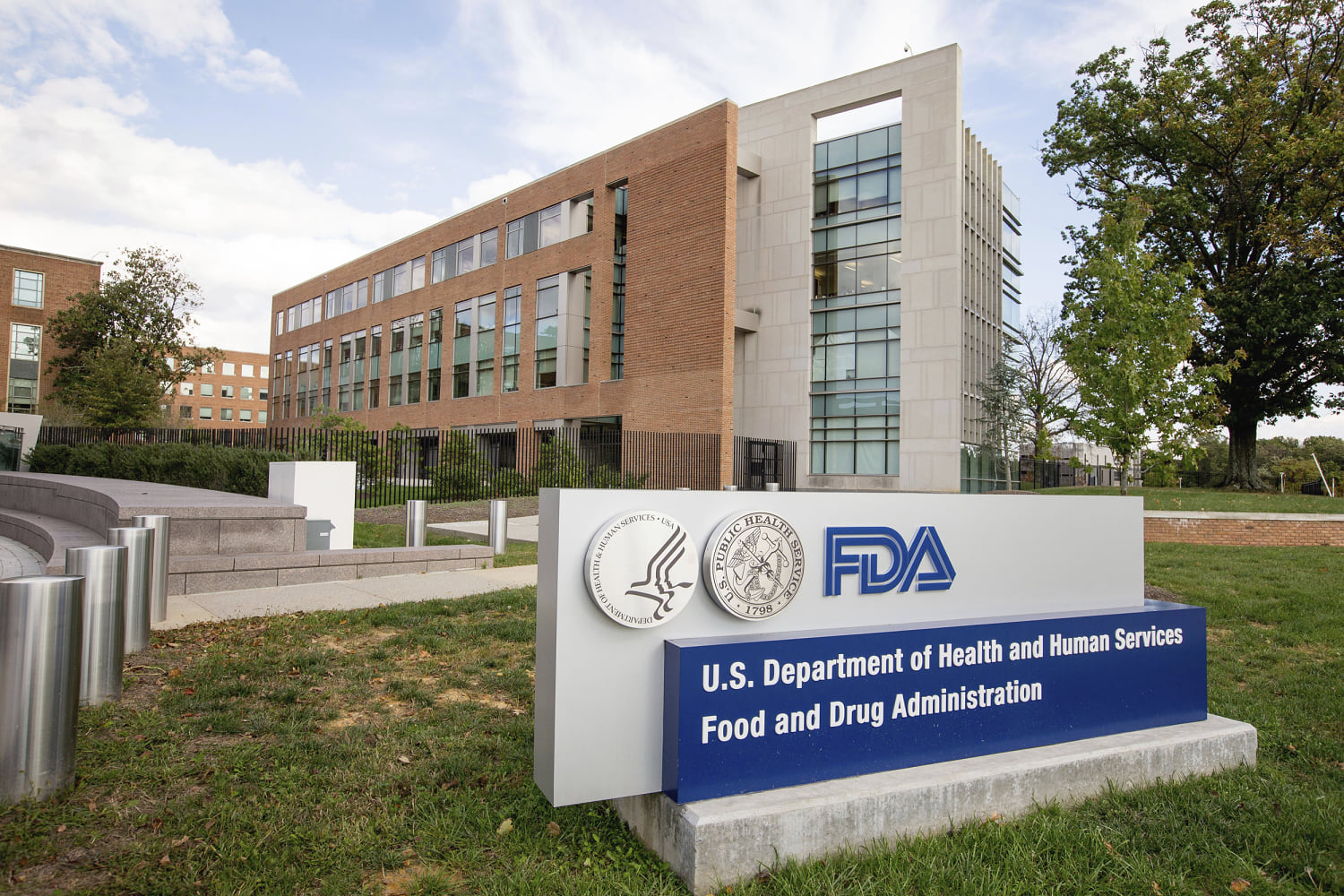
Under President Donald Trump and Health and Human Services Secretary Robert F. Kennedy Jr.the reach of the Food and Drug Administration is being scaled back by executive fiat. Reporting indicates that the FDA is suspending inspections that help ensure the safety of the nation’s food, amid broader staff cuts at HHS imposed by the new administration. Reuters recently reported that, among the inspections paused, the FDA “is suspending a quality control program for testing of fluid milk and other dairy products due to reduced capacity in its food safety and nutrition division.” More specifically, “the agency suspended its proficiency testing program for Grade ‘A’ raw milk and finished products.”
It is only thanks to the power of the federal government that the United States has historically enjoyed safe food. Thanks to the efforts of an array of agencies, such as the Food and Drug Administration and the Agriculture Department’s Food Safety and Inspection Service, we can reliably trust that the food we buy is safe and, if not, know about any outbreaks or recalls.
While some reformers succeeded in creating local agencies, by the 1920s, milk had earned a dangerous reputation.
It was not always like this and milk is the perfect food to show why. The dairy industry started off selling so-called “swill milk” to urban consumers in the mid-1800s. Such milk came from city-based dairy cows fed on mash and leftovers from nearby distillers and brewers. Reformers at the local and state levels campaigned for the construction of local milk regulators and against swill milk, because they feared its corrupting influence and low-grade grains in the feed.
While some reformers succeeded in creating local agencies, by the 1920s, milk had earned a dangerous reputation. Dairies spread dysentery, typhoid fever, scarlet fever, diphtheria and — most of all — bovine tuberculosis. Scientists at one of the precursors to the U.S. Centers for Disease Control and Prevention even worried that milk was more dangerous than ever, with one writing, “Milk is second in importance only to water as a vehicle of disease transmission.”
Out of Alabama, a plan emerged from a cooperative program organized by the state Board of Health and the public health service to begin coordinating the local, state and federal regulations into one inspection system. Their reasons included the failure of the current patchwork system, the failure to align regulatory standards, the ability of the dairy industry to overpower the fragmented inspection system and the necessity of milk being pasteurized to kill harmful bacteria. By the end of the 1920s, the federal government began to build just such a coordinated system. Out of these efforts was born the use of grading, including grade A, as well as the unpasteurized but still regulated raw milk sector.
The White House’s justification for scaling back federal authority is that the states will pick up the slack and take charge of their own consumer marketplaces. But historical examples show why a patchwork system of ad hoc state and local regulations was ineffective at ensuring milk was healthy.
As of 1938, when the national inspection system had not yet fully come together, milk was responsible for 25% of all foodborne disease outbreaks. In the subsequent three decades, the dairy inspection system grew in fits and starts, particularly during World War II and the Korean War. By 1965, that number had declined to 2.5%. That year, the federal government formally united milk inspection and created a unified standard for inspecting dairy products.
Milk regulations united the efforts of the federal government’s fragmented system to protect consumers.
The unified federal milk ordinance finally allowed the country to tackle a long-simmering problem. Milk is not only a perfect vector for bacteria to thrive, but it is also an excellent way for agricultural and industrial toxins to get into the food system and into the bodies of the people who consume milk, particularly children. No toxin was more feared at that time than residues of DDT, the once-formidable chemical that had ushered in a whole new chemical age in farming In 1965, the federal government forced all milk inspections to also test for pesticide residues. States like California had spent years trying to hammer out their own DDT regulations, but only federal power was able to force producers’ compliance.
Milk regulations united the efforts of the federal government’s fragmented system to protect consumers. In addition to the CDC ordinances, the FDA tested for residues and set ingredient standards; the USDA regulated agricultural uses of pesticides and other related chemicals and focused on eradicating animal diseases; and the U.S. Environmental Protection Agency cleaned up the environment to keep the cows safe from pollutants, including banning DDT in the mid-1970s.
An example of how these organizations had to work together to keep milk safe to consume was with the feed additive DES. The synthetic hormone was widely used to enhance cattle growth in the mid-20th century, following USDA approval. But the government continued monitoring its use in animal agriculture, and studies found that DES was carcinogenic. By the end of the 1970s, the FDA banned DES because it posed a threat to human health.
The FDA could ban chemicals like DES because Congress empowered it to do so. Its roots go back to public outcry unleashed by Upton Sinclair’s 1906 book “The Jungle.” But not until 1938 did Congress give the FDA the authority to directly regulate ingredients. Two decades later, another law gave the FDA the power to ban any substance known to be a carcinogen from entering into the consumer marketplace. Taken all together, agencies like the FDA provide Americans their only serious way to have a say in what they put into their bodies. As history shows, not only did producers put toxins into the food that Americans ate, but they also lacked the power to clean up their own industries.
Yet, lawmakers created these institutions to keep every American safe through the power of the federal government, the one thing that is potent enough to even try to hold food producers to account. Only the federal government possesses the tools of research coordination, national testing standards, recalls, federal lawsuits and public awareness campaigns. Time will tell if we can ever reassert these regulatory bodies’ authority, or re-create them if they are gone. Our health depends on it.
-

 The Josh Fourrier Show6 months ago
The Josh Fourrier Show6 months agoDOOMSDAY: Trump won, now what?
-
Uncategorized6 months ago
Bob Good to step down as Freedom Caucus chair this week
-
Economy6 months ago
Fed moves to protect weakening job market with bold rate cut
-

 Politics6 months ago
Politics6 months agoWhat 7 political experts will be watching at Tuesday’s debate
-
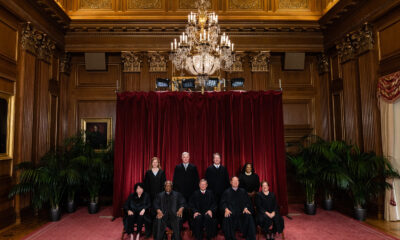
 Politics6 months ago
Politics6 months agoHow Republicans could foil Harris’ Supreme Court plans if she’s elected
-
Uncategorized6 months ago
Johnson plans to bring House GOP short-term spending measure to House floor Wednesday
-
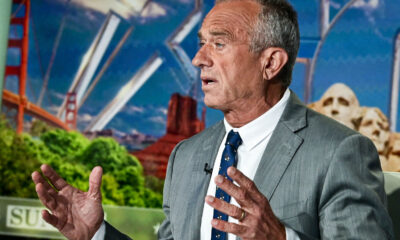
 Politics6 months ago
Politics6 months agoRFK Jr.’s bid to take himself off swing state ballots may scramble mail-in voting
-
Economy6 months ago
It’s still the economy: What TV ads tell us about each campaign’s closing message




